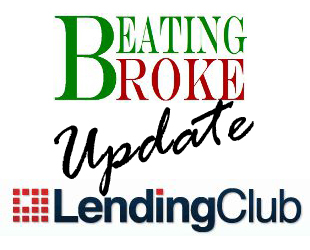There’s little question that student loans can be one of the more difficult debt burdens that a person can have. The cost of tuition is rising each year, and the rates seem to be following suit. Many college graduates are finding themselves with a degree that cost as much as their first house is likely to. It goes to reason, then, that finding any means available to help pay that debt off is probably a good idea.
What is Smarterbank?
I was recently introduced to a product offering called Smarterbank. It’s an online checking account that’s run by The Bancorp Bank. It’s fully FDIC insured to $250,000 and, for most purposes, operates just like any other online checking account. Much like some other online banks, Smarterbank has some perks attached to their accounts.
In the case of Smarterbank, they give a “cashback” that goes directly to your student loans. For purchases under $100, they apply .5% of the purchase to your Smarterbucks account. For purchases over $100, the first $100 gets you the same .5%, and everything over $100 gets you 1%.
Smarterbank Fees
 One of the nice perks of Smarterbank is that it’s a relatively fee free account. There’s a monthly “inactivity” fee if you don’t use the account at least once in a month of $4.50, otherwise, if you’re a smart user, you’ll never hit a fee. And, by smart user, I mean you don’t overdraft, or do something else silly. They’ve got fees that are associated with things like statement research, etc, but those are pretty standard and you’re pretty unlikely to ever use those services. You also get access to over 40,000 ATMs in the STAR ATM network.
One of the nice perks of Smarterbank is that it’s a relatively fee free account. There’s a monthly “inactivity” fee if you don’t use the account at least once in a month of $4.50, otherwise, if you’re a smart user, you’ll never hit a fee. And, by smart user, I mean you don’t overdraft, or do something else silly. They’ve got fees that are associated with things like statement research, etc, but those are pretty standard and you’re pretty unlikely to ever use those services. You also get access to over 40,000 ATMs in the STAR ATM network.
The Smarterbucks Program
As I mentioned above, the “cashback” goes into your Smarterbucks account. So, you’re probably wondering what the heck that is. Smarterbucks is a rewards program. Not unlike programs like Swagbucks, it rewards you for certain actions. Things like shopping through their portal (“Smarterbucks Marketplace”) earn you cash back that is credited to your account. You can also ask others to contribute to your account. That option could be pretty cool to use as an alternative for people to give to you for birthdays, Christmas, or special events.
Once your Smarterbucks account reaches $15, they send a payment for that amount to your student loan. At first, that might not seem like much, and, really, it isn’t. But, every little bit helps. And every $1 you pay off early is $1 that you aren’t accruing interest on for the life of the loan. And that can add up in a hurry.
Would you switch to an account like Smarterbank for an offer like this? Is the offer strong enough to make it worth the time? What other offers have you seen that help with student loan payback?
See all the details on Smarterbank.

I started this blog to share what I know and what I was learning about personal finance. Along the way I’ve met and found many blogging friends. Please feel free to connect with me on the Beating Broke accounts: Twitter and Facebook.
You can also connect with me personally at Novelnaut, Thatedeguy, Shane Ede, and my personal Twitter.


 When I used a personal loan.
When I used a personal loan.